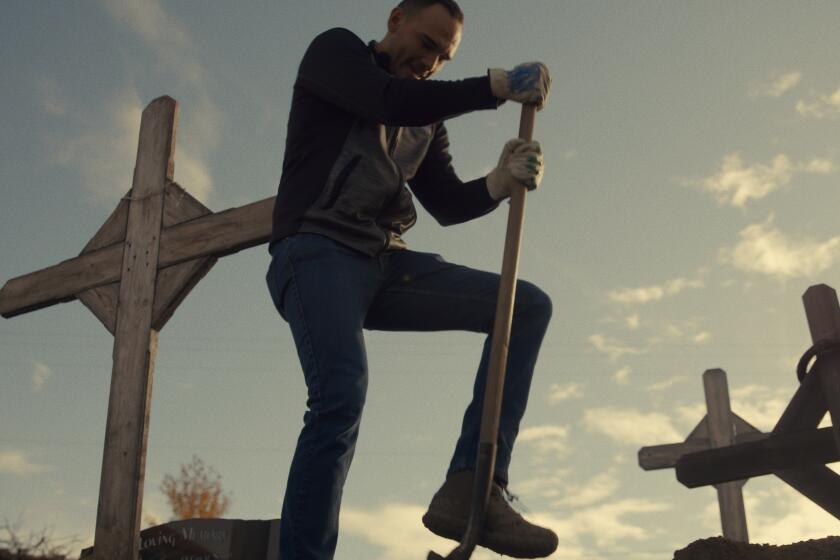Editorial: How the deal to stop draining Mono Lake can help settle California’s future water wars

- Share via
It has been four decades since a California Supreme Court ruling limited Los Angeles’ right to drain the distant Mono Lake Basin to quench the thirst (and water the lawns and flush the toilets) of L.A. residents.
But the decision in National Audubon Society vs. Superior Court only began a long and painstaking series of talks among the city, environmentalists and others. A landmark 2013 settlement agreement left for later the all-important details on how Los Angeles was to restore four streams that flow down the eastern slope of the Sierra Nevada to feed the endangered hyper-saline and alkaline lake, known for its strange-looking tufa towers.
In a little-noticed announcement on Monday, the parties said they had reached agreement on final implementation. Terms were embodied in an order by the state Water Resources Control Board, the regulatory agency that has played a key role in giving teeth to the court’s Mono Lake ruling.
It’s an important achievement, demonstrating that it’s possible for a city that once plundered the pristine Eastern Sierra to be a champion of its restoration. Particular credit is due to the Mono Lake Committee, which was formed in 1978 to save the lake; and also its adversary, the L.A. Department of Water and Power, which historically has kept water flowing to the city and continues to press for a reliable water supply, but is now also a partner in protecting the environment. Managing the inherent tension between those two goals is one of the definitional tasks of 21st century California.
Credit is also due to Mayor Eric Garcetti and his appointees to the DWP Board of Commissioners, without whom final agreement was unlikely.
The plight of Mono Basin and its enticing water supply is related to, but not the same as, that of the more storied Owens Valley some 130 miles downstream. The Los Angeles Aqueduct began drying up Owens Lake in 1913, but L.A. needed even more water and looked northward. A tunnel completed in 1941 began diverting stream water that once flowed into Mono Lake, lowering the surface level by 45 feet and creating a land bridge for coyotes and other predators to an island and its bird nesting grounds.
The 1979 lawsuit and the court’s ruling four years later established that Los Angeles’ lawful rights to the water had to be balanced with the public’s right to preserve the lake. The case vindicated the “public trust doctrine” as a major force in California water rights, even if settlement talks continued for decades.
There are several important takeaways from last week’s agreement, in addition to proof that L.A. can be a force for good in the environment.
One is that water disputes can take a very long time to resolve. But elected leaders like Garcetti can break the logjam by focusing water agencies on the ecological restoration portion of their mission — something they will rarely do on their own, because their orientation is to deliver water. L.A. residents are no doubt grateful for the DWP’s water acumen. They are likely to appreciate the agency’s developing environmental role as well.
Another takeaway is that the state water board can effectively act in the public interest, if it’s given a sufficient measure of independence to do its work.
Yet another takeaway is the reminder that none of this progress would have been made had not a dedicated group of environmental advocates gone to court many years ago. The “voluntary” talks, and ultimately the agreement to relinquish the rights to a great deal of water, were possible only because the court ruling and the water board actions gave city officials no choice but to engage.
Similarly, an agreement was reached to restore the San Joaquin River in the Central Valley — 60 miles of which had dried up due to diversion of water to farms — only because a lawsuit brought the parties to the table and compelled earnest talks.
Contrast that with the current situation on both the San Joaquin and the Sacramento rivers, where the water board has held off on issuing mandates to limit water for agricultural interests to restore sufficient flow levels so that migrating Chinook salmon might have a fighting chance at survival. Gov. Gavin Newsom has called on water agencies and environmental preservation organizations, which are miles apart on diversions and flow levels, to instead reach “voluntary agreements” without first being compelled by a court ruling or water board order to meaningfully engage.
This backward approach leads to talks that could go on as long as the Mono Lake discussions, but without much chance of conclusion. If California is to save the two great rivers that drain its largest watershed, the governor should note the successful conclusion of the Mono Lake dispute and free the water board to issue mandates. Only then will the parties come to the table truly ready to deal.
More to Read
A cure for the common opinion
Get thought-provoking perspectives with our weekly newsletter.
You may occasionally receive promotional content from the Los Angeles Times.










